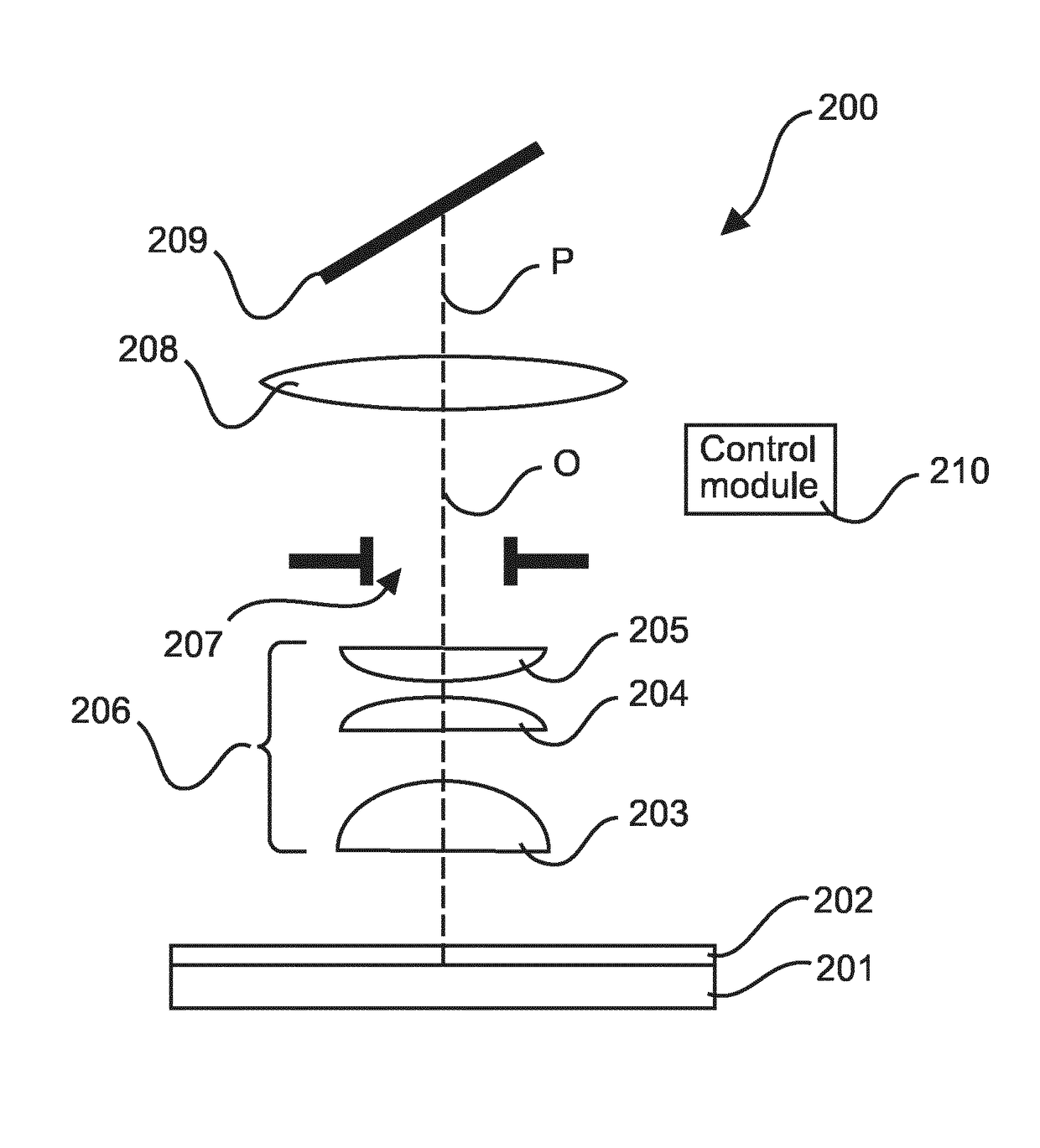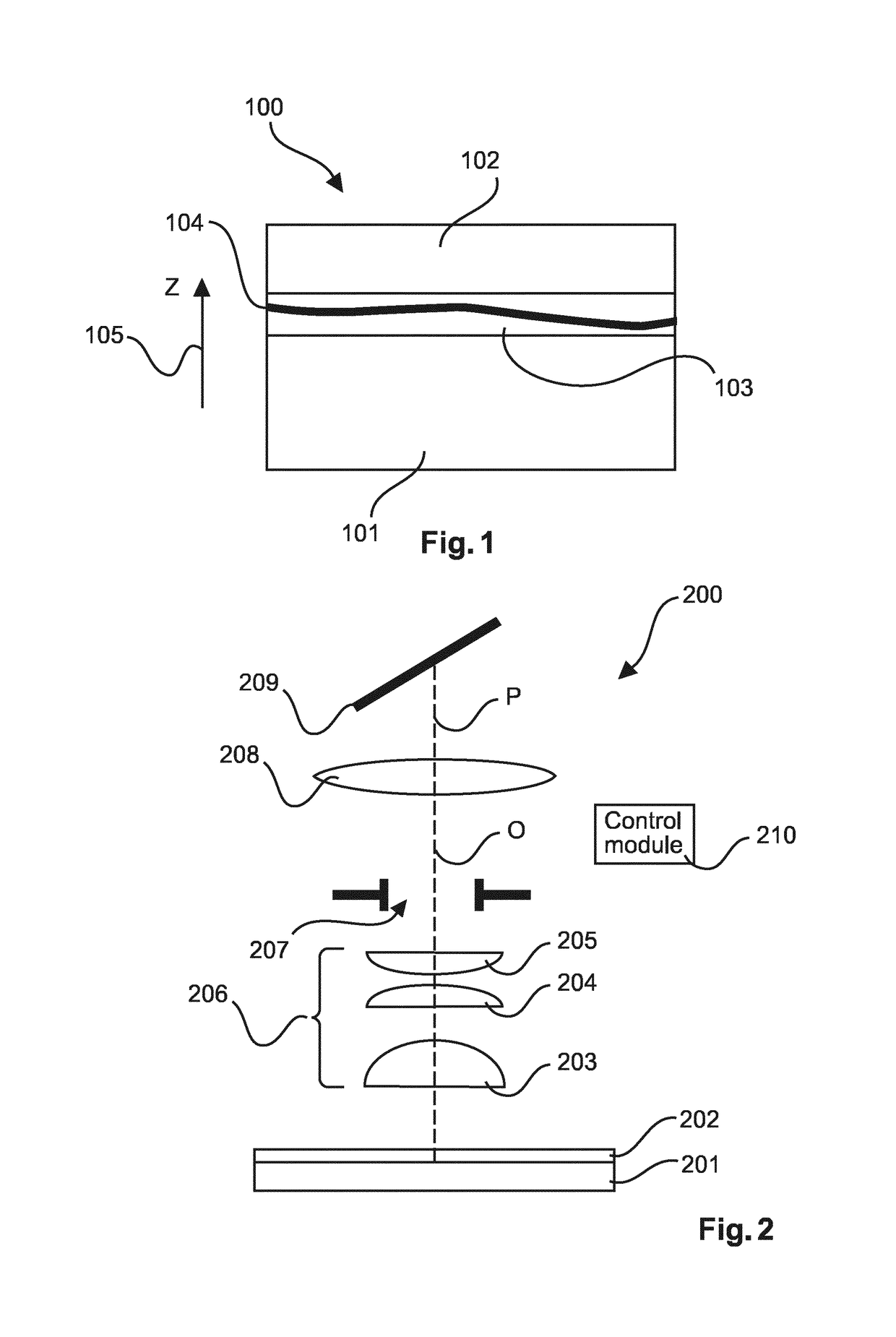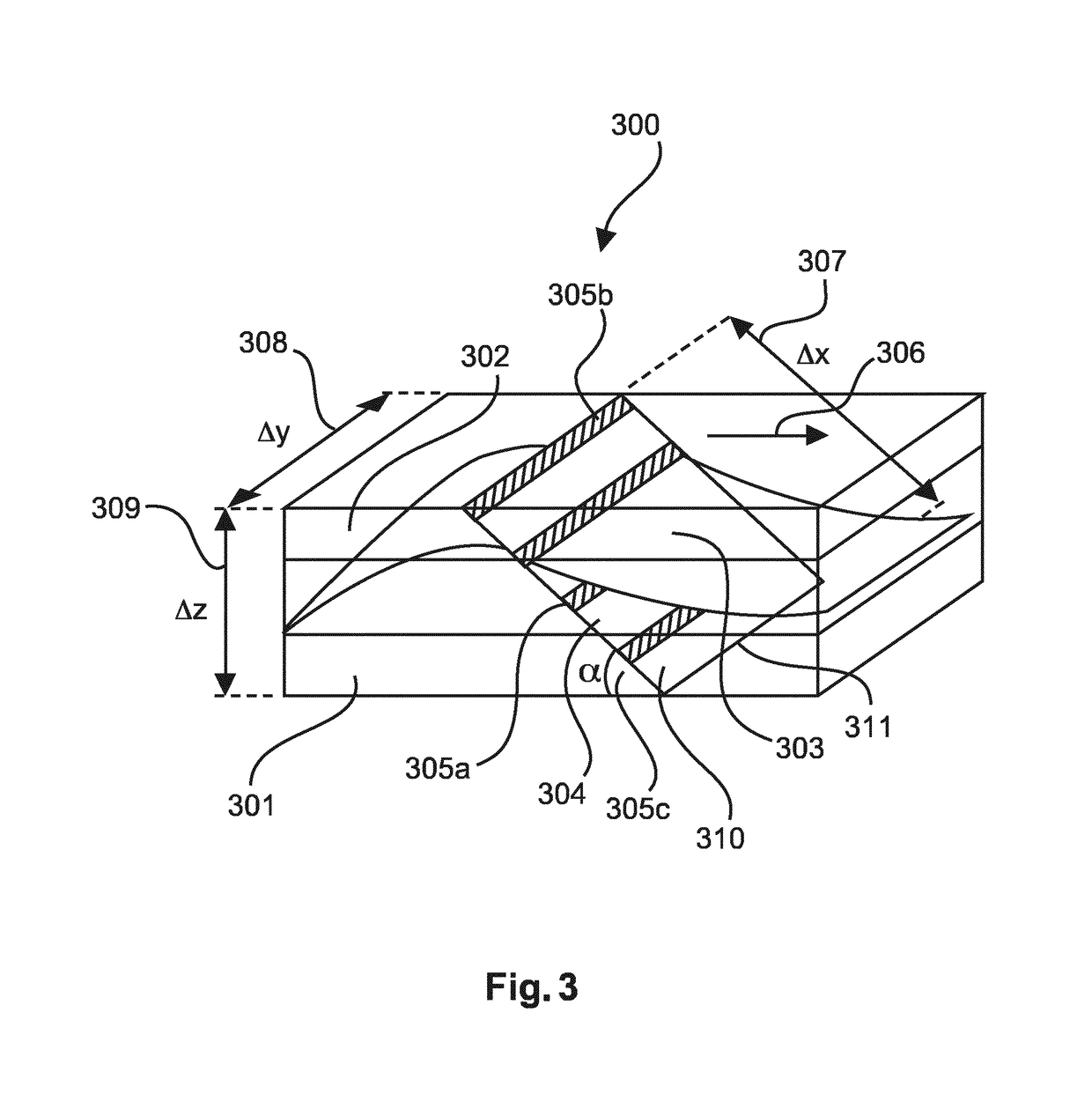Scanning imaging system with a novel imaging sensor with gaps for electronic circuitry
a scanning imaging and electronic circuit technology, applied in the field of sample detection, can solve the problems of reducing the relative low speed of reading out the region, and achieve the effects of improving image quality, increasing the fill factor of the pixel, and increasing the low light sensitivity of the imaging sensor
- Summary
- Abstract
- Description
- Claims
- Application Information
AI Technical Summary
Benefits of technology
Problems solved by technology
Method used
Image
Examples
Embodiment Construction
[0042]In the following, another exemplary, non-limiting embodiment of the present invention is provided by means of an imaging sensor which is described in thorough detail in the following table. Therein, the gap is described as “Gap Region” and is named “Pixel Pitch”, being the 13 pixel wide gap as described before. The pixels are rectangular as they are 5.56 micrometer long in Y direction and 6.42 micrometer in X direction, as can be seen from the following table.
[0043]
ParameterTypicalUnitPixel Size y5.56umPixel Size x6.42umPixel Pitch x (TDI)6.42umPixel Pitch x (Gap region)83.46um(13 pixel)Number of pixels in x direction (per TDI block)4Number of pixels in y direction4096Number of TDI blocks in x direction128Number of dark and test pixels x (per TDI4block)Number of dark and test pixels x (total)513Number of dark and test pixels y (per side)32Number of dark and test pixels y64Total number of effective pixels per line4096Total number pixels on Matrix4160 × 513DSNU 1%PRNU 2%Geometri...
PUM
 Login to View More
Login to View More Abstract
Description
Claims
Application Information
 Login to View More
Login to View More - R&D
- Intellectual Property
- Life Sciences
- Materials
- Tech Scout
- Unparalleled Data Quality
- Higher Quality Content
- 60% Fewer Hallucinations
Browse by: Latest US Patents, China's latest patents, Technical Efficacy Thesaurus, Application Domain, Technology Topic, Popular Technical Reports.
© 2025 PatSnap. All rights reserved.Legal|Privacy policy|Modern Slavery Act Transparency Statement|Sitemap|About US| Contact US: help@patsnap.com



